About these infections
Crypto virus refers to ransomware infections that encrypt your files. Ransomware encrypts files using strong encryption algorithms, thus once files are encrypted, it’s not always possible to recover them. They can get into a computer via spam email attachments, exploit kits and malicious downloads.
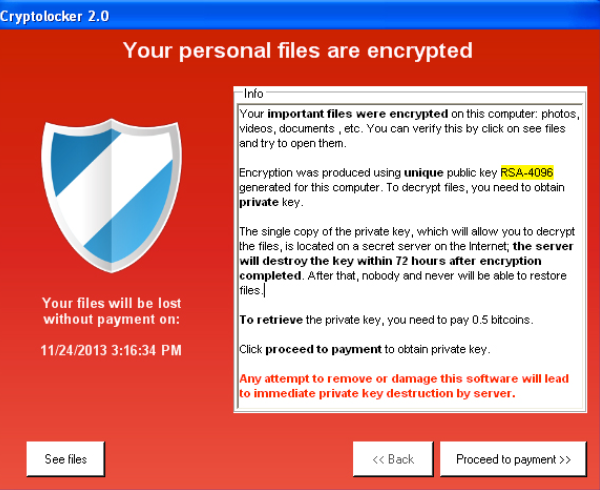
And once such an infection is in, it will encrypt your files and ask that you pay a ransom to get a decryption key. What you are asked to pay really depends on which ransomware you have, some ask for up to $50, some may demand thousands of dollars. However, paying for a decryptor is rarely recommended for a couple of reasons. First of all, you are not guaranteed a decryptor because these are criminals you would be dealing with. There is nothing stopping them from simply taking your money, which has happened on numerous occasions. Second, paying the ransom supports an industry that does billions of dollars of damage.
A much better investment is backup. Despite there being three world wide ransomware attacks, and numerous threats appearing every day, there still are people who do not have backup for their important files. And that is a problem, because that’s why ransomware strives. If you had backed up your files prior to infection, ransomware would not be such a big issue to you. You could just delete crypto virus and proceed to file recovery.
How do these threats spread?
Ransomware commonly comes in spam email. It’s attached to those emails, and when users open the attachment, they launch the file encryption process. The emails carrying ransomware can seem legitimate, senders often pretending to be from real companies or organisations, like Amazon or a tax agency. They often claim the attachment is some kind of receipt for a purchase or an important money related form. These kinds of sensitive topics often prompt the user to open the attachment without thinking, which is what cybercrooks are aiming for. No matter how legitimate the email seems, there are certain signs that could give it away. Check the sender’s email address. You can use a search engine to look into it. If it’s an email from supposedly Amazon, you can easily check if the email address is legitimate. You should also pay attention to the greeting used in the email. If it’s a legitimate sender whose email you should open, they would likely use your name. Generic ransomware emails would use greeting like Dear Customer/Member. Grammatical mistakes are also pretty common. In short, be very careful about what email attachments you open because they could be harbouring malware.
Some ransomware can also get in via vulnerabilities in your computer software. This is why updating your programs is so important. Software vendors regularly realise updates, with patches for various discovered vulnerabilities. If you don’t install them, some malware could use those vulnerabilities to infect your computer.
What does it do?
Once the ransomware gets inside the computer, it’s only a matter of minutes until all your important files are encrypted. Generally, all affected files will have an attachment added to them, which will help you identify the ransomware. You will be unable to open the files, and should find a ransom note in all folders containing encrypted files. The note should explain what has happened to the files, and what you need to do to recover them. You will be asked to pay a ransom, and like we said, the amount will depend on which ransomware you have. You will likely be asked to pay in cryptocurrency because it provides crooks anonymity. Whether you pay the ransom is your decision to make, but it’s generally discouraged for the above mentioned reasons. Consider all other options before you even think about paying. Maybe you have backed up files before but have forgotten? Maybe there is a free decryptor available? It should be noted that some ransomware is decryptable, and malware researchers may have released a free decryptor, so you may want to look into that. If you are lucky enough to have access to a free decryptor, invest into backup! Make copies of files you don’t want to lose, and do it as soon as possible. Because if you have backup when dealing with ransomware, you can just uninstall crypto virus, and recover files with no problem.
crypto virus removal
If the ransomware still remains on the computer, anti-malware would be needed to remove crypto virus. It’s useful to have such a program installed at all times because it could prevent various threats from harming your computer. Manual elimination for threats like ransomware is not recommended because you could end up damming your computer more. Unfortunately, anti-malware software is not capable of recovering files, it will merely get rid of the infection.
Offers
Download Removal Toolto scan for Crypto VirusUse our recommended removal tool to scan for Crypto Virus. Trial version of provides detection of computer threats like Crypto Virus and assists in its removal for FREE. You can delete detected registry entries, files and processes yourself or purchase a full version.
More information about SpyWarrior and Uninstall Instructions. Please review SpyWarrior EULA and Privacy Policy. SpyWarrior scanner is free. If it detects a malware, purchase its full version to remove it.

WiperSoft Review Details WiperSoft (www.wipersoft.com) is a security tool that provides real-time security from potential threats. Nowadays, many users tend to download free software from the Intern ...
Download|more


Is MacKeeper a virus? MacKeeper is not a virus, nor is it a scam. While there are various opinions about the program on the Internet, a lot of the people who so notoriously hate the program have neve ...
Download|more


While the creators of MalwareBytes anti-malware have not been in this business for long time, they make up for it with their enthusiastic approach. Statistic from such websites like CNET shows that th ...
Download|more
Quick Menu
Step 1. Delete Crypto Virus using Safe Mode with Networking.
Remove Crypto Virus from Windows 7/Windows Vista/Windows XP
- Click on Start and select Shutdown.
- Choose Restart and click OK.

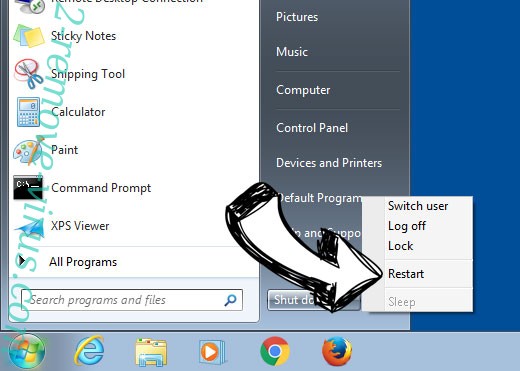
- Start tapping F8 when your PC starts loading.
- Under Advanced Boot Options, choose Safe Mode with Networking.

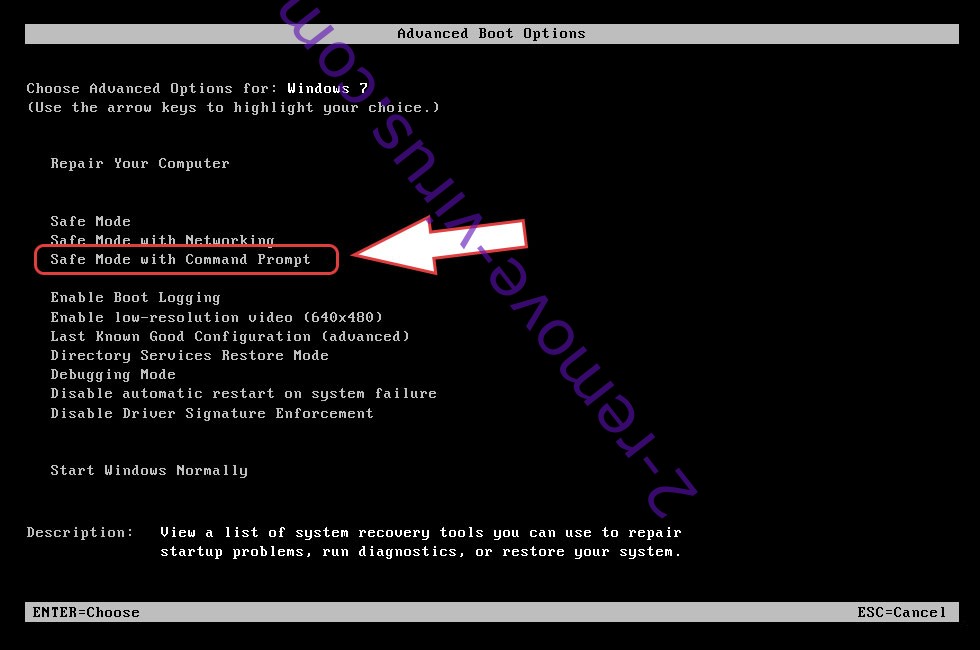
- Open your browser and download the anti-malware utility.
- Use the utility to remove Crypto Virus
Remove Crypto Virus from Windows 8/Windows 10
- On the Windows login screen, press the Power button.
- Tap and hold Shift and select Restart.


- Go to Troubleshoot → Advanced options → Start Settings.
- Choose Enable Safe Mode or Safe Mode with Networking under Startup Settings.

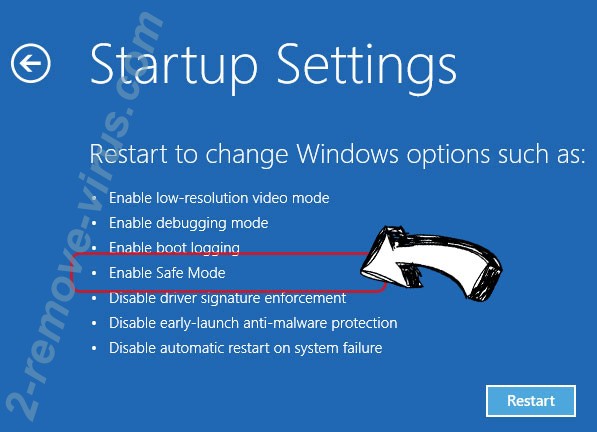
- Click Restart.
- Open your web browser and download the malware remover.
- Use the software to delete Crypto Virus
Step 2. Restore Your Files using System Restore
Delete Crypto Virus from Windows 7/Windows Vista/Windows XP
- Click Start and choose Shutdown.
- Select Restart and OK


- When your PC starts loading, press F8 repeatedly to open Advanced Boot Options
- Choose Command Prompt from the list.

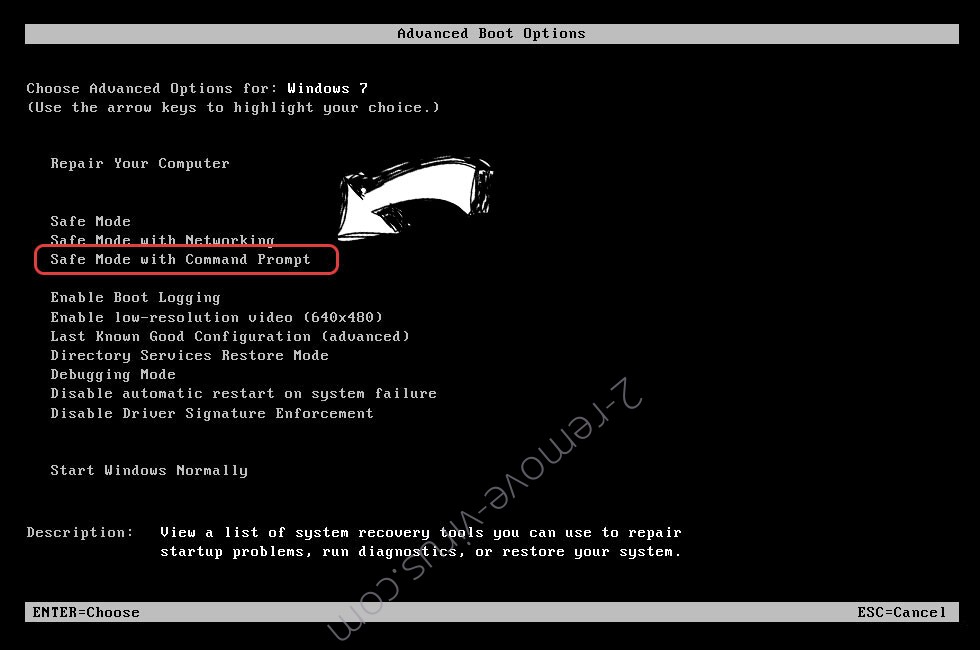
- Type in cd restore and tap Enter.

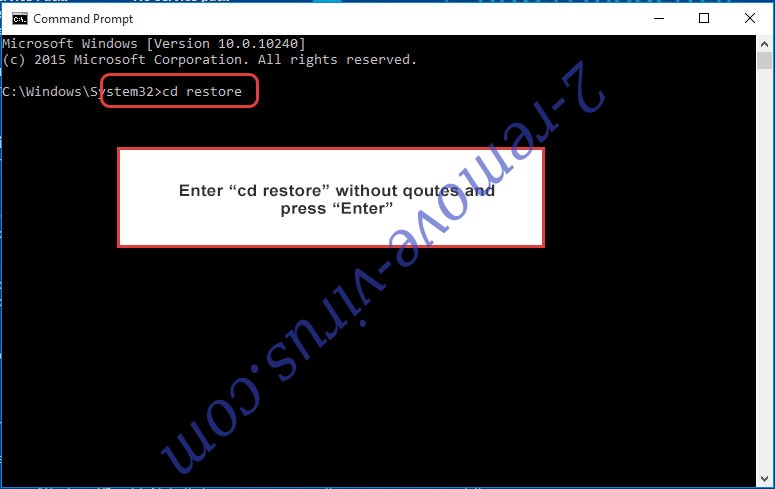
- Type in rstrui.exe and press Enter.

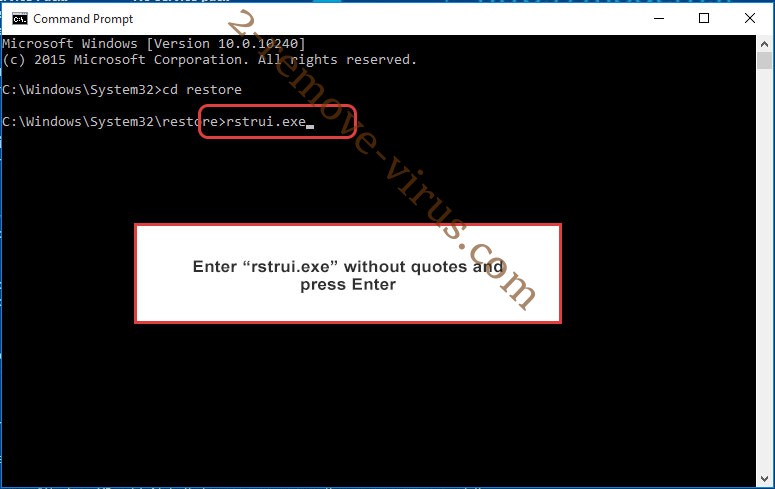
- Click Next in the new window and select the restore point prior to the infection.

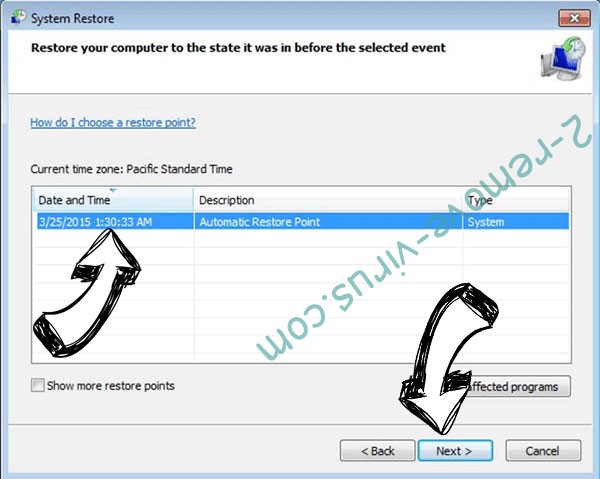
- Click Next again and click Yes to begin the system restore.

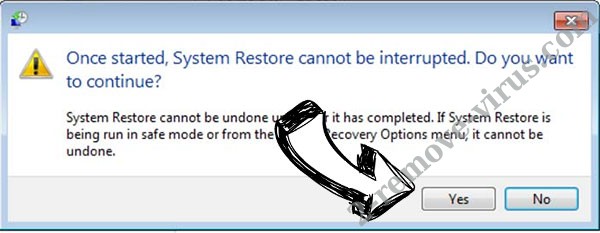
Delete Crypto Virus from Windows 8/Windows 10
- Click the Power button on the Windows login screen.
- Press and hold Shift and click Restart.


- Choose Troubleshoot and go to Advanced options.
- Select Command Prompt and click Restart.

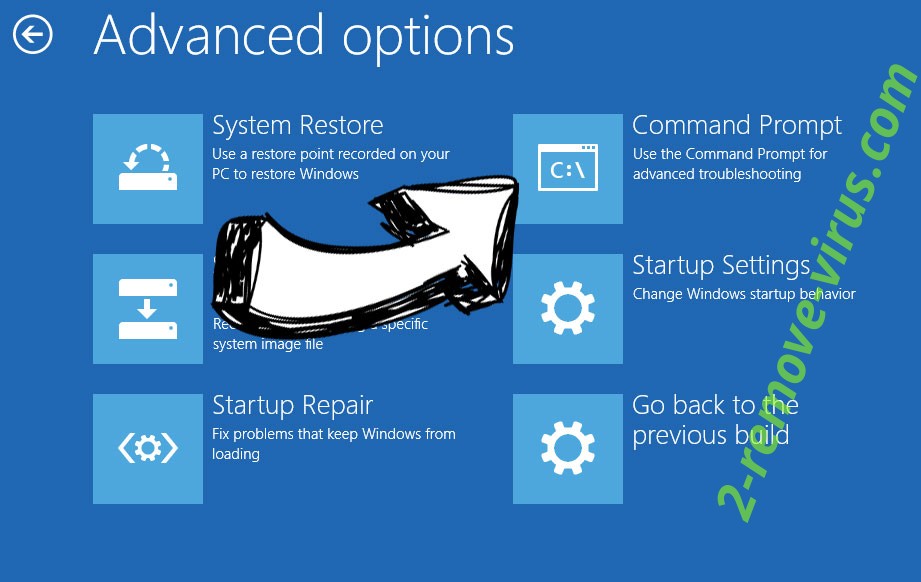
- In Command Prompt, input cd restore and tap Enter.


- Type in rstrui.exe and tap Enter again.


- Click Next in the new System Restore window.

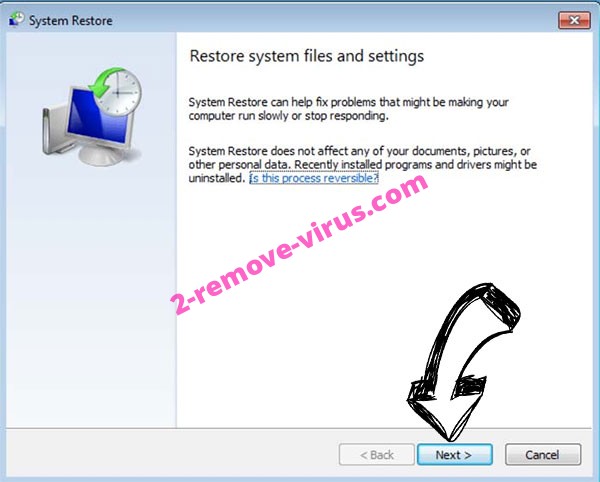
- Choose the restore point prior to the infection.


- Click Next and then click Yes to restore your system.


Site Disclaimer
2-remove-virus.com is not sponsored, owned, affiliated, or linked to malware developers or distributors that are referenced in this article. The article does not promote or endorse any type of malware. We aim at providing useful information that will help computer users to detect and eliminate the unwanted malicious programs from their computers. This can be done manually by following the instructions presented in the article or automatically by implementing the suggested anti-malware tools.
The article is only meant to be used for educational purposes. If you follow the instructions given in the article, you agree to be contracted by the disclaimer. We do not guarantee that the artcile will present you with a solution that removes the malign threats completely. Malware changes constantly, which is why, in some cases, it may be difficult to clean the computer fully by using only the manual removal instructions.
